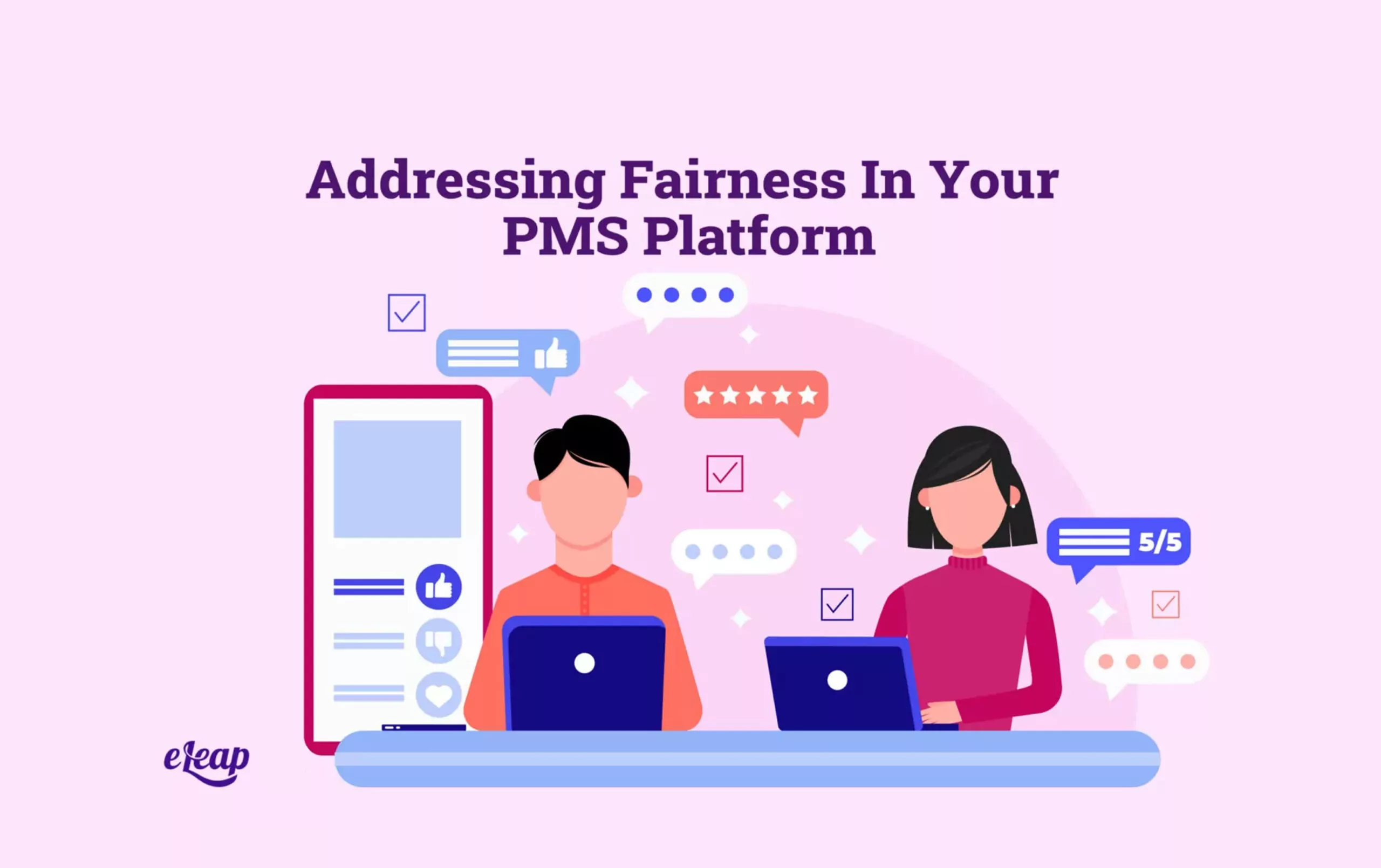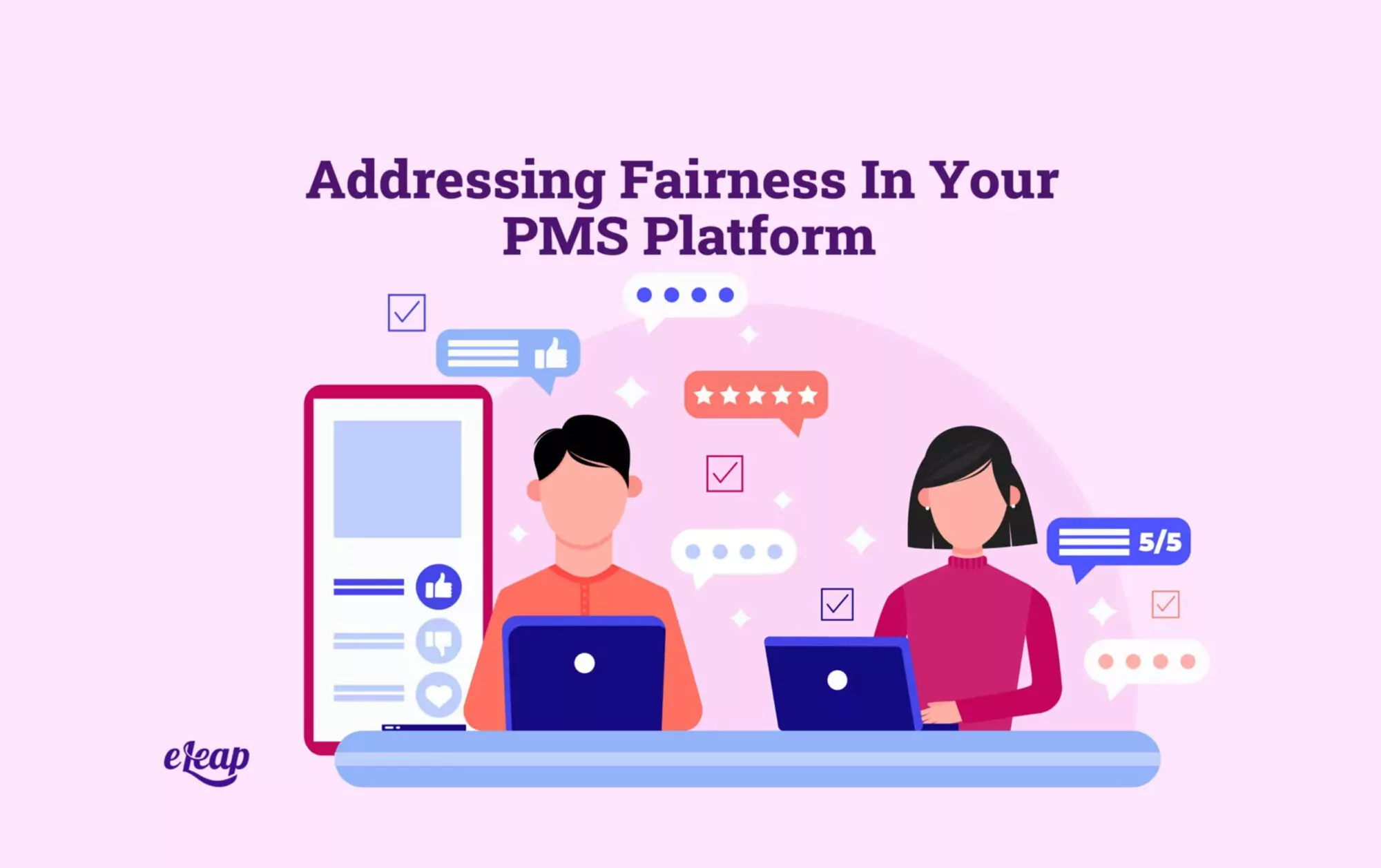Addressing Fairness In Your PMS Platform

When speaking of fairness concerning an PMS platform, there are several different ways one can approach the term. Currently, algorithms are so advanced in breaking down data into micro-categories and factoring in every possible element that there’s no question of whether the modern-day performance management process is fair. The eLeaP continuous performance management system gives organizations powerful options to attract and retain high-caliber team members. Explore how eLeaP®’s Performance Management Platform can simplify evaluations, boost productivity, and drive measurable results.
Regarding the actual methods and assessment process (using the most updated platforms), PMS is probably as fair as it’s ever been. Rather than focusing on the overall fairness of the process itself, we’ll take a different perspective for this article.
We’ll examine what makes employees perceive that the PMS process is fair. After all, the “eye-of-the-beholder” factor is extremely important in a process as vital as performance assessment.
Three main factors stand out when it comes to the perceived fairness of the performance management process. Many other factors likely play into the perceived fairness, but these three seem to be the most important and enhance the perception when companies take these approaches.
- Linking the goals of employees to the priorities of the organization in a transparent way while maintaining flexibility
- Invest in the coaching skills of managers to make them better leaders and translators of what day-to-day fairness is
- Reward standout performance for specific roles but still manage converging performance for others.
Studies conducted in 2018 revealed that companies that had these three dynamics in place were considered fair 84% of the time. Granted, regardless of where we are heading, one can only assume that “fairness” has become even more vital as time has progressed. Why this assumption?
Organizations demand much more of their employees, expecting them to respond quickly and more efficiently to sometimes hostilely competitive work environments yet remain agile and collaborative. As employers’ expectations continue to rise and employees break their backs to meet them, it’s only natural that the demand for recognition and fairness also increases.
Let’s examine how an organization can win the battle of perception about its PMS.

Linking Employee Goals and Business Priorities
First, building trust in performance management means being transparent in expectations from team members and how their roles fit into the larger goals of what your organization wants to accomplish. Some employees get the sense that corporations believe their goals are too broad or prone to irrelevance as circumstances change, and they get disconnected from the company’s goals.
This is solved by giving team members at all levels the opportunity to have more say in their goals as employees. Use the following blueprint as a way to come up with your ideas as an organization to accomplish this task:
- List three to five overarching goals linked to problem areas within your organization.
- These can be waterfalled down to key performance indicators (KPIs) at the business unit and team level, and finally to employees.
- Allow employees to provide feedback to ensure these KPIs fit their roles as team members.
- Give management the power to adjust the KPIs for different roles while ensuring consistency.
- Use a performance dashboard to allow each employee’s KPIs to be shared openly with team members to show the progress of the individuals and the team, allowing everyone to examine the efforts of top performers.
The goals may be adjusted and adapted to as often as needed. Goals shouldn’t become constantly evolving targets, but there should be room for adjustment based on workload and market conditions.
Teach Managers to Be Coaches
Most of the participants in the survey mentioned above stated that their managers were not good coaches. When this happens, most employees don’t consider the PMS effective, fair, or trustworthy.
Sticking to the same theme as above, managers should meet weekly with corporation members to discuss the KPIs’ progress. After determining each employee’s progress individually, management can meet with each employee in a coaching session to discuss their progress in a one-on-one session.
Management should also have daily check-ins with team leaders and perform weekend roundups. When employees don’t meet the requirements set forth by the KPIs on their dashboards, they receive a red mark. After receiving two red marks, written feedback and three extra hours’ worth of coaching are provided.
You can also invest in your managers’ soft skills. There are certain workshops that specialize in managers handling difficult conversations with employees. These can help turn managers into the leaders and coaches that your team needs.
Differentiating Compensation
When it comes to adjusting pay based on performance assessments, things should be kept simple as the base so managers can explain them in ways that employees understand. Sometimes, it’s stated that the fair thing to do is to take away the rating system. However, doing this makes it difficult for organizations to explain to team members where they stand.
When a company has a great majority of “average” performing employees, it can be difficult to have and explain varying degrees of pay for the same level of employee. However, any company should present the image that there are “haves” and “have-nots.”
To make this process as easy as possible, all employees should have base salaries that are based on market rates. Beyond this, the best strategy is to use what is known as the “power curve.” The power curve theory is based on the fact that 20% of employees are responsible for 80% of the value. This 20% of standout employees receive an additional 15 to 20% pay because of their standout performance.
Managers may use the option to pay out yearly bonuses to the middle-of-the-pack team members based on KPI performance and may also completely choose to leave out poor performers. What normally ends up happening is that the performance among the average performers is so comparable to the others that the increase in pay among employees isn’t large enough to garner any insidious talk.
When you implement these three dynamics into the daily workflow of your organization, it can breed a much better environment and make it easier for employees to buy into your performance management system. These methods can significantly increase the perceived fairness of the assessment system, meanwhile avoiding internal conflict among employees based on pay differences.